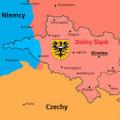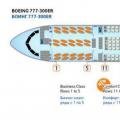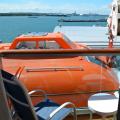ROUTING LESSON DESIGN
Lesson topic
Geological structure and the relief of Africa
Planned educational outcomes
Subject
Metasubject
Personal
Know the geological history of Africa, explain the main features of the modern relief of the continent based on the connection with the history of formation and structure crust; show on a physical map the main landforms of Africa; explain the placement of minerals on the mainland.
Minerals of Africa
But the sedimentary rocks that formed the top of the plate were too light to be subdued; then they remained on the surface, lay in the confrontation zone and formed, in fact, mountain ranges. Turning in particular to the southern Apennines, we see that the chain consists of a heap of huge rocky "shavings", each of which is one to four kilometers thick and extends over many hundreds or even thousands of square kilometers. Each layer was detached from the subductive African plate and pushed over the previously overlapping plates.
Work with sources of information, especially with a variety of thematic maps; identify causal relationships, determine criteria for comparing facts, phenomena, work with text, draw up logical chains, tables, diagrams.
Formation of a positive attitude towards learning, towards cognitive activity,
The limestone and dolomite rocks that form the Lattari Mountains belong to only one of the various tectonic layers that form the southern Apennines. The same layer extends deep into two nearby bays and over much of Campania. As we have seen, this aquifer originates from a carbonate platform that, prior to orogeny, was a lowland bounded by coral reefs along the African edge of the Tethys Ocean. There were very deep areas of the sea next to it, in which sequences of layers were deposited different types; richer in clays, silicates and sandstones.
desire to acquire new knowledge, skills, improve existing ones, be aware of their difficulties and strive to overcome them, master new types of activity.
Basic concepts studied in the lesson
Ethiopian Highlands, Ahaggar Highlands, Tibesti, East African Highlands, Alpine-Himalayan Fold Belt, Atlas Mountains, Cape Mountains, Drakensberg Mountains, Kilimanjaro Volcano, Cameroon Volcano, Congo Basin, Assal Desert, Sahara Desert, Kalahari Rift Desert or Rift Valley;relief, platform, internal and external relief-forming processes, volcano, highlands, minerals.
Geographical exploration of Africa
In addition, these sequences have undergone the effects of convergence between Africa and Europe and constitute other layers of the Apennine Range, both exposed and superimposed on the carbonate layer that we see in the Lattari Mountains. Even if unaffected, it should be assumed that such an overlap exists even in the Lattari Mountains. Even the layer of earth that overlaps on the platform does not show up very well in the Lattari Mountains. Composed of fairly delicate rocks, erosion has largely dismantled it, leaving a few small residual valves in the Sorrento area.
The type of ICT tools used in the lesson
computer, multimedia projector, interactive set-top boxMimio, testing systemMimioVote
Educational Internet Resources
Bibliography:
1. “Geography. Continents and oceans ". EAT. Domogatskikh, N.I. Alekseevsky, in two parts. - M. " Russian word", 2014
A relatively close area where Sicilian soils, on the other hand, are fairly well preserved, is around Contursi. While the Apennine was wrinkled, along its northeastern flank, a deep-sea basin developed for several kilometers, at the bottom of which there was an accumulation of detrital materials carried to the sea by rivers, which in the meantime destroyed the already formed part of the chain. These sediments reached depths due to big waves turbidity that has occurred intermittently as a result of submarine landslides involving unstable deltaic bodies along the coast.
2. "Lessons methodological developments to the textbook by E.M. Domogatskikh, N.I. Alekseevsky “Geography. Grade 7 "L.V. Patsukova, -M., "Russian Word", 2013
The structure of the surface of the continent is quite peculiar. Plains and plateaus with a height of 200 to 1000 m prevail, there are very few lowlands. The most extensive plateaus are East African and South African. uplifted areas alternate with hollows, the most extensive of which are the Kalahari Basin, Congo Basin, etc.
The rock formations indicative of this new geodynamic and sedimentary scenario are dense alternations of sandstone and clay or marl layers that can be seen superimposed on Mesozoic limestone in the westernmost part of the Sorrento Peninsula. However, small patches remain in Arola, Traliae and around Mobte Cervigliano. In this latter location, the abandoned sandstones also contain rocky fragments emanating from the aforementioned Sicilian layer.
Topic. Geological structure and relief of Africa
This suggests that, while these submarine sandstones were being deposited, the chain that was formed, which was larger to the west, already contained those Sicilian soils that would soon afterwards collide with the calcareous rocks of the Lattari Mountains. The flysch in question belongs to the Miocene and often seems complex and erroneous, because even the sediments of the foresea, in turn, were reached in front of the chain and were deformed by tectonic thrust. The same tremors also deformed the carbonate layer as it traveled east to traverse the Ligurian lands.
The features of the relief are associated with the history of the development of the continent. At the heart of the continent lies the ancient African-Arabian platform - part of the fractured Gondwana. The platform was formed in the Archean and Proterozoic and acquired greater stability over 2 - 3 billion years. Only the Atlas Mountains in the north and the Cape Mountains in the south are created by later crustal movements.
Angelo at Tre Pizzi, Agerola and Monte Cervigliano. In this last place, about a thousand, it is observed that the limestone of the Upper Cretaceous forming a mountain peak is crossed by the already mentioned sandstones of the Miocene. Having passed the Apennine Orogenic Wave, the landscape of the region has not yet developed the vertical fragmentation that characterizes it today. This configuration was actually born over the past two million years or so, as the Tyrrhenian Basin expanded eastward until it assumes its current expansion.
This expansion came through tectonic collapses that reduced the width of the Apennines, bringing its westernmost portions below sea level. The southern slope of the Monti Lattari-Sorrento-Capri ridge is its impressive steepness to the fact that it is a slope that, geologically speaking, was born recently and therefore has not yet had time to be mitigated by erosion and landslides.
The huge African block experienced uplift and subsidence, while the northern part of the continent more often subsided than rose, flooded with seas. The crystalline basement of the platform is overlain by sedimentary rocks and only in the center of the Sahara and on the coast of the Gulf of Guinea comes to the surface.
Major modern structural elements mainland inherited from the beginning of the Paleozoic. They are similar to the corresponding structures of the East South America, with which Africa remained united until the end of the Mesozoic. The northern Sahara-Arabian part is characterized by the distribution of plates and syneclises with the Paleozoic and Phanerozoic cover (Saharan plate, Taudenni, Mali-Nigerian, Chad, etc.) -Liberian, etc.).
As with other similar cases, the Salerno graben is asymmetrical, and on the opposite edge it has no disadvantages comparable to the Amalfi bounces. In light of this reconstruction, we can therefore understand that the islets of Li Galli, Isca and Vitara are nothing more than the tops of the reliefs that once formed a continuation south of the Lattari mountains, and then - when the graben of Salerno was born - collapsed under the sea , sliding along two faults that run from Punta della Campanella to Positano and from here to Vettika.
Another important one, but completely submerged in the fault concession, scatters south of Li Galli and can be observed. from Largo di Capri to Salerno. With the same tectonic events that created the Gulf of Salerno, there was an opening to the south of the Agerola basin, which was initially also closed on this side by landforms, which then plunged into the sea. Today, there are two pieces of evidence for the ancient state of the indoor basin: the ascent to a height extending from the central area of Ponte to the southern edge of the plateau, and the inclination north of the breaches that appear at the Grotte Biscotto.
Part of the mainland southeast of the Cameroon - northern tip of the Red Sea experienced a tendency to uplift and underwent strong tectonic activation, especially in the east. Syneclises occupy only the inner parts of the southern subcontinent; their axis runs along the 20th meridian. The northernmost and largest equatorial basin of the Congo is replaced in the south by less extensive ones - Okavango and others. Large uplifts in the east and south are the Nubian-Arabian Shield cut by the Red Sea rift, the Mozambique Proterozoic fold belt, etc.
These disturbances represent ancient debris, and the slope of their layers clearly indicates that there was a relief of considerable height, where today we have a slope that slopes towards the sea. Further excellent evidence of the terrain shocks that took place during the Quaternary period can be found in the spur that looms over Nocella.
When the gulfs of Salerno and Naples sank, our base also suffered tectonic shocks. This is evidenced by the presence of sea terraces, which are located at a depth of 240 m along the slope that descends to the Amalfi coast. The fact that these lifts are then slowed down to the end is supported by the fact that the tracks coastline about two hundred thousand years ago, they were raised by several meters, and those that were left by the sea level about a thousand years ago are still at the height that the sea reached at that time.
In the north and south, Africa is surrounded by folded zones. In the south, it is the Paleozoic Cape region, in the north, the Atlas fold zone, which is part of the Mediterranean belt.
Among the main types of flat relief within Africa are: basement plains and plateaus on the Archean and Proterozoic basement. Their heights in northern Africa usually do not exceed 500 m and very rarely reach 1000 m. Among the gently undulating crystalline surfaces are remnant mountains and ridges, composed of the most stable rocks. This type of relief is widespread on weakly activated massifs dividing ancient syneclises; stratal plains and uplands, horizontal or inclined and stepped, characteristic of the areas of distribution of the sedimentary cover along the periphery of ancient syneclises (for example, the Congo or Kalahari syneclises) and on the outskirts of the continent, which experienced subsidence in the Mesozoic and first half of the Cenozoic. This type of relief is also found on basement ledges overlapped by sedimentary deposits or in ancient syneclises within large uplifts. Layered plains and uplands are young, with weak erosional dissection, and ancient, with deep and varied dissection; accumulative plains formed from the surface by Neogene and Anthropogenic marine or continental sediments. They occupy the central parts of the ancient syneclises and the bottoms of the rift zones, and are also located on the continental margins that were subjected to young transgressions.
The era, which, being warmer than the current one, saw the Earth poorer in glaciers and, therefore, the sea level is 5-6 meters higher than today. As well as along the coastal cliffs, traces of this ancient sea level can also be seen at Grotte dello Smeraldo, where stalactites formed during the period of cold climates and shallow seas show signs of submersion of the sea up to, in fact, six meters in height.
Working with a physical map of Africa
Remaining on the topic of sea level fluctuations due to climate change, it should be remembered that the area in question also retains signs that as the Earth cooled and glaciers expanded, the percentage of water in the state decreased. liquid and the sea level was several tens of meters below its current position. These are, first of all, underwater sea terraces, but also karst caves, which, modeled in a continental environment during the cold and low sea phases, are now below sea level.
Approximately 20% of Africa's surface is characterized by mountainous terrain. The revived mountains and highlands, formed as a result of Meso-Cenozoic and neotectonic uplifts, accompanied by faults and volcanism, are characteristic mainly of the eastern outskirts of Africa, along the rift zones crossing it. But some areas of mountainous relief are also located among the flat-platform areas, being connected with massifs that have experienced tectonic activation (Akhaggar, Tibesti, Drakonovy mountains, etc.). Among the main types of morphostructure of the revived mountains are: basement blocky mountains and highlands formed in the areas of the foundation exit; mesas formed in areas where sedimentary rocks and volcanic sheets are spread; volcanic mountains and volcanic plateaus associated with fault systems.
Of similar importance are underwater sources of fresh water, which are discarded by karst drainage systems that developed during periods when the sea was at lower altitudes than today. Changes in sea level in those narrow and deep bays, which are located in valleys and gorges, that flows deeply deepened below the current zero quota during seaward offsets and were then entrained by the sea as it rises to its current position at the end of the last ice age. Similar to what happened during previous transitions from the Ice Age to the Interglacial Age, this rise in sea level meant the sinking of the isthmus, which in the last glacial phase connected Capri to the mainland.
The Cape Mountains belong to a very rare type of revived mountains with an inherited folded structure, clearly expressed in modern relief.
The Atlas region includes Paleozoic structures, reworked by the Meso-Cenozoic movements to such an extent that they are considered part of the Mediterranean mountain belt. These older structures occupy the middle and southern parts of the Atlas region, while its northern chains are formations created mainly in the late Miocene - early Pliocene.
Learning new material
In particular, the alluvial and tunic plains disappeared under the sea, which border the north during the last glaciation and connected it with Piana del Sarno, which was almost in Sorrento at the time. Although less striking, there was also a decrease in amplitude along the southern flank of the peninsula, where the entire area between Nerano, Li Galli and Positano was submerged, along with other shores, to a lesser extent. Another important effect of the postglacial marine transgression was the return of the sea to the base of rocky cliffs that had been battered and formed during the previous warm periods of the Quaternary and which had instead left in retreat during the ice ages.
The modern relief of the mainland is notable for its monotony: most of it is a vast table plateau, which is characterized by a slight hypsometric dissection.
The main features of the hypsometry of the African continent:
- According to the features of vertical dissection, the continent is divided into two parts: the northern flat-wavy Low Africa (with average heights of about 500 m) and the southern more elevated High Africa (with average heights of slightly more than 1000 m), the difference between these parts of the mainland is not only in altitude characteristics , but also in greater surface dissection High africa... The border between them is the line from Benguela in the west of Angola to Massawa on the shores of the Red Sea, running across the watershed plateau of the Congo and Zambezi basins, along the western foothills mountain ranges along the line of the Great African Rift and enveloping the Ethiopian Plateau from the west and north.
- The African continent is characterized by the presence of internal basins. Orography South Africa is located in the center of the Kalahari Basin, bounded by Indian Ocean the uplifts of the Drakensberg Mountains, in the south - parallel to the stretching chains of the Cape Mountains, in the west - the massifs of the Great Ledge (Kaoko, Dammar, etc.). All the marginal uplifts of Africa have an asymmetric profile: they descend steeply to the seashore and gently descend into the mainland. Their formation is associated with the "surfacing" of the continent, especially its marginal parts as a result of a deeper "immersion" of the oceanic crust of the Atlantic, Indian and Southern oceans into the asthenosphere, i.e. with the processes of isostatic equalization of gravity on the lower planes of lithospheric plates. This process began at the end of the Mesozoic and continues to this day. In Low (North) Africa, internal basins are also expressed: Chad, Upper Nile, Middle Congo, etc.
Inner basins are very often areas of internal flow and sedimentation (i.e. the accumulation of modern sedimentary rocks).
In this regard, it should be noted that during the last sea withdrawal or during the last glaciation, many of these rocks were buried by prisms and cones of detrital material created by overhanging rock walls for the destructive effect of frequent frost and thaw cycles. So, in order to return to defeat the limestone cliffs, the sea had to first remove the accumulations of debris that had been covered during the last ice age. Mainly free-flowing materials, wave motion has succeeded almost everywhere in the exhumation of ancient rocks and the resumption of its modeling.
Active uplift processes do not allow rivers to form an equilibrium profile, which leads to the presence of rapids and waterfalls on almost all rivers.
- Especially contrasting hypsometric indicators are characteristic of East Africa. The elevation changes on the East African Plateau exceed 1000 m. The flatness of the plateau is disturbed by isolated uplifts: volcano. Kenya, Rwenzori massif, vol. Karisibi, volc. Mary, Elgon and others (with heights over 4000 m). It is here that highest point mainland - volcano. Kilimanjaro (5895 m). These are block and volcanic formations, the formation of which took place as a result of the development of a rift zone in East Africa - the Great African Rift.
- The peculiarity of the relief of Africa lies in the fact that, in contrast to Eurasia, there are almost no extensive coastal lowlands.
- On the mainland, there are only two mountainous regions with a folded structure: the Atlas and the Cape.
Cape Mountains - mountain system in the south of the mainland, consisting of a number of parallel medium-altitude ridges, between which the Maliy Karu plains are located. The highest peak is (2326 m).
But it is not uncommon to observe areas along the coast where the sea has not yet completely removed the accumulations formed during the last glaciation. They usually remain closed upstream of the cliffs, but in some bays and coves they sometimes sink to sea level. Over the past five thousand years, the oceans have experienced only minor fluctuations in relation to today's quota. One of these vibrations is highlighted at several points on the peninsula, from Roman ruins slightly submerged in the sea. The most significant are those associated with marinas and fishing vessels, as they provide a better estimate of the degree of sea level rise over the past two thousand years or so.
Geologically, Africa is predominantly a Precambrian platform, the foundation of which protrudes to the surface within the Nubian-Arabian, Akhagar, Regibat and other shields. Folded mountains located only in the northwest (Atlas Mountains) and in the South (Cape Mountains). Africa is the only continent on which highest peaks concentrated not in the zones of folded structures.
The extinct volcano Kilimanjaro (5963 m), the highest point of the mainland and other highest mountains are located on the East African plateau broken by faults.
Aberdare ridge(English Lord Aberdare Range) is a mountain range in Africa, located in the center of Kenya, north of its capital, Nairobi.
Ridge in the east equatorial Africa stretches along the northern part of the Maasai land, between the equator and 1 ° south latitude from NW to SE and is separated by the Guazo-Nyiro valley from Kenya in the east; reaches 4300 m in height.
Mount Keenangop at the southern end mountain range gives rise to three rivers: Guazo, Nyiro, Urura (in the lower reaches - Guazo Nerok), washing the western slope of the Aberdare ridge and connecting to the north-west of Kenya with Guazo Nyiro and Guazo Amboni, which flows into Lake Tana.
The Aberdare Range was discovered by J. Thomson on the way to Kenya, Kilimanjaro and Victoria Nyantza; he crossed it at the northern end near Lashau and gave it a name.
In 1950, on the mountain plateau formed by the ridge, the Aberdare National Park (Aberdare National park), functioning up to the present time.
Atlas (Atlas Mountains)- initially only the Mauritanian part of the large mountain system in northwest Africa, stretching from the Atlantic coast of Morocco to the coast of Tunisia; later, the entire mountain system from Cape Cotey (modern Cape Spartel near Tangier) to Sirtov. For the first time the ancient world learned about the existence of the Atlas Mountains from the travels of the Phoenicians, and then from the periphery of Hannon and the voyages of Polybius, undertaken by him approx. 146 BC e. The first of the Romans to cross the Atlas Mountains was Suetonius Paulinus (42 AD). Detailed description The atlas is contained in the writings of Maximus of Tire (2nd century AD).
The Atlas Mountains consist of the Tel Atlas, High Atlas, Middle Atlas, Saharan Atlas ridges, inland plateaus (High Plateau, Moroccan Meseta) and plains.
The highest peak is Mount Toubkal (4167 m)
Cape Mountains, mountains in South Africa, in South Africa, between Port Elizabeth in the east and the mouth of the river. Olifants in the west. Length about 800 km. Consist of several parallel ridges. The average height is 1500 m, the highest is 2326 m. They are composed of sandstones and quartzites. From Port Elizabeth to Worcester, it stretches for 600 km from east to west and flanks from the north (the Svartberg ridge) and from the south (the Langeberg ridge, Autenikwaberge) a longitudinal valley, the Little Karoo (see Karoo). From Mount Worcester, turn NW-W. (ridge Olifantsrifir, Cedar Mountains). The climate in the west is of a Mediterranean type with winter precipitation (over 600 mm on the windward slopes); in the east, precipitation is more uniform (over 800 mm per year). Snow falls on the peaks in winter. The leeward slopes and inland valleys are semi-desert. On the windward slopes in the west there are mainly secondary thickets of evergreen shrubs (finbosh), in the east there are mixed coniferous-deciduous forests on brown and mountain-forest brown soils.
Covering the eastern and southern parts of the mainland, it exceeds 1000 m. The highest elevations are in the East African Plateau - the Huge Plain is raised. The extinct volcanoes Kenya (5,199 m) and Kilimanjaro (5,895 m) are located there. These volcanic mountains are confined to the East African Rift Valley. The Ethiopian Highlands are also a high-rise (2,000 - 3,000 m) large plain dotted with extinct volcanoes... It drops abruptly in the east and descends by stairs in the west.
The Kalahari depression is surrounded on all sides by plateaus and plateaus.
Several steps are clearly visible in the relief of the basin. The lowest part forms vast plain in the middle reaches of the Congo with heights of no more than 500 m. Basically, it is composed of a thick stratum of ancient lacustrine alluvium, and along the rivers there are strips of young alluvial deposits. The surface of the plain is almost completely flat, since in the past it was the bottom of a lake that ran off to the side Atlantic Ocean... Its remains are lakes Mai-Ndombe and Tumba. Under the lacustrine sediments of the Mesozoic age within the plain, there are strata of ancient glacial formations - the product of the activity of powerful glaciers that covered vast territories of continents southern hemisphere at the end of the Paleozoic era.




